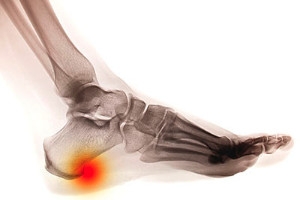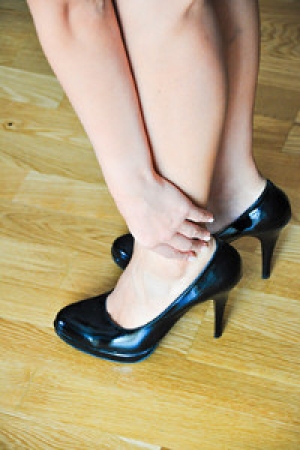
How Do Gout Attacks Occur?
 Patients who experience gout are aware of the debilitating pain and discomfort this condition may cause. It affects the joints in the big toe, and is considered to be a form of arthritis. Gout can be caused for a variety of reasons. These can include genetic factors, eating foods that have elevated purine levels, or it may come from specific medical conditions. It occurs as a result of high uric acid levels in the blood. Patients have described the sensation of gout as crystals that form between the joints, and can cause severe pain and discomfort. There are methods that can be implemented which can possibly prevent future gout attacks. These can include losing excess weight, and avoiding foods consisting of red meat and seafood. Additionally, it is recommended that alcohol consumption is limited. If you are getting frequent gout attacks, it is suggested that you consult with a podiatrist as quickly as possible who can help you to manage and prevent this condition.
Patients who experience gout are aware of the debilitating pain and discomfort this condition may cause. It affects the joints in the big toe, and is considered to be a form of arthritis. Gout can be caused for a variety of reasons. These can include genetic factors, eating foods that have elevated purine levels, or it may come from specific medical conditions. It occurs as a result of high uric acid levels in the blood. Patients have described the sensation of gout as crystals that form between the joints, and can cause severe pain and discomfort. There are methods that can be implemented which can possibly prevent future gout attacks. These can include losing excess weight, and avoiding foods consisting of red meat and seafood. Additionally, it is recommended that alcohol consumption is limited. If you are getting frequent gout attacks, it is suggested that you consult with a podiatrist as quickly as possible who can help you to manage and prevent this condition.
Gout is a painful condition that can be treated. If you are seeking treatment, contact Dr. Michael A. Wood from Foot Health Institute. Our doctor will treat your foot and ankle needs.
What Is Gout?
Gout is a form of arthritis that is characterized by sudden, severe attacks of pain, redness, and tenderness in the joints. The condition usually affects the joint at the base of the big toe. A gout attack can occur at any random time, such as the middle of the night while you are asleep.
Symptoms
- Intense Joint Pain - Usually around the large joint of your big toe, and it most severe within the first four to twelve hours
- Lingering Discomfort - Joint discomfort may last from a few days to a few weeks
- Inflammation and Redness -Affected joints may become swollen, tender, warm and red
- Limited Range of Motion - May experience a decrease in joint mobility
Risk Factors
- Genetics - If family members have gout, you’re more likely to have it
- Medications - Diuretic medications can raise uric acid levels
- Gender/Age - Gout is more common in men until the age of 60. It is believed that estrogen protects women until that point
- Diet - Eating red meat and shellfish increases your risk
- Alcohol - Having more than two alcoholic drinks per day increases your risk
- Obesity - Obese people are at a higher risk for gout
Prior to visiting your podiatrist to receive treatment for gout, there are a few things you should do beforehand. If you have gout you should write down your symptoms--including when they started and how often you experience them, important medical information you may have, and any questions you may have. Writing down these three things will help your podiatrist in assessing your specific situation so that he or she may provide the best route of treatment for you.
If you have any questions, please feel free to contact one of our offices located in Lansing, and Chicago, IL . We offer the newest diagnostic and treatment technologies for all your foot care needs.
Gout
Gout is a form of arthritis that is caused by a buildup of uric acid crystals in the joints. This considered to be one of the most frequently recorded medical illnesses throughout history. Gout occurrences in the US have risen within the past twenty years and the condition now affects 8.3 million people which is 4% of all Americans. Researchers have found that gout affects men more than women and African-American men more than white men.
Symptoms of gout are warmth, swelling, discoloration, and tenderness in the affected joint area. The small joint on the big toe is the most common place for a gout attack to occur.
People who are obese, gain weight excessively, drink alcohol heavily, have high blood pressure, or have abnormal kidney function are more likely to develop gout. Furthermore, certain drugs and diseases are likely to increase levels of uric acid in the joints which eventually leads to gout. You are also more likely to develop gout if you eat a lot of meat and fish.
Many who experience gout attacks will experience repeated attacks over the years. Some people who have gout symptoms, may never have them again, but others may experience them several times a year. If you have gout symptoms throughout the year, you may have recurrent gout. Those who have gout should also be careful about their urate crystals collecting in their urinary tract, because this may lead to kidney stones.
Diagnosis for gout is done by checking the level of uric acid in the joints and blood. Your podiatrist may also prescribe medicine to reduce uric acid buildup in the blood, which will help prevent any gout attacks.
To treat gout, your podiatrist may also prescribe you Anti-inflammatory medication (NSAIDs) which will relieve the pain and swelling of a gout episode and it can also shorten a gout attack. Maintaining a healthy diet is also a proven method to prevent gout attacks.
Falling and Independence
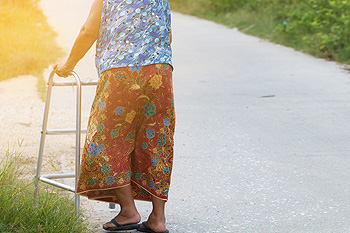 When older people fall, they may become fearful to then complete daily activities, and can lose some of their independence. Additionally, the fear of falling may have some seniors become anxious and depressed. A helpful method that may prevent these feelings from developing may come from implementing fall prevention strategies, which may enable older people to feel more secure. These can consist of removing torn rugs from the living environment, and installing grab bars in the shower and toilet area. Additionally, it is beneficial to have regular vision and physical examinations to update current prescriptions and eyeglasses. If you would like more information about fall prevention techniques, please consult with a podiatrist who can help you avoid potential painful foot conditions.
When older people fall, they may become fearful to then complete daily activities, and can lose some of their independence. Additionally, the fear of falling may have some seniors become anxious and depressed. A helpful method that may prevent these feelings from developing may come from implementing fall prevention strategies, which may enable older people to feel more secure. These can consist of removing torn rugs from the living environment, and installing grab bars in the shower and toilet area. Additionally, it is beneficial to have regular vision and physical examinations to update current prescriptions and eyeglasses. If you would like more information about fall prevention techniques, please consult with a podiatrist who can help you avoid potential painful foot conditions.
Preventing falls among the elderly is very important. If you are older and have fallen or fear that you are prone to falling, consult with Dr. Michael A. Wood from Foot Health Institute. Our doctor will assess your condition and provide you with quality advice and care.
Every 11 seconds, an elderly American is being treated in an emergency room for a fall related injury. Falls are the leading cause of head and hip injuries for those 65 and older. Due to decreases in strength, balance, senses, and lack of awareness, elderly persons are very susceptible to falling. Thankfully, there are a number of things older persons can do to prevent falls.
How to Prevent Falls
Some effective methods that older persons can do to prevent falls include:
- Enrolling in strength and balance exercise program to increase balance and strength
- Periodically having your sight and hearing checked
- Discuss any medications you have with a doctor to see if it increases the risk of falling
- Clearing the house of falling hazards and installing devices like grab bars and railings
- Utilizing a walker or cane
- Wearing shoes that provide good support and cushioning
- Talking to family members about falling and increasing awareness
Falling can be a traumatic and embarrassing experience for elderly persons; this can make them less willing to leave the house, and less willing to talk to someone about their fears of falling. Doing such things, however, will increase the likelihood of tripping or losing one’s balance. Knowing the causes of falling and how to prevent them is the best way to mitigate the risk of serious injury.
If you have any questions, please feel free to contact one of our offices located in Lansing, and Chicago, IL . We offer the newest diagnostic and treatment technologies for all your foot care needs.
Falls Prevention
Elderly Americans are very susceptible to falls as they get older. Everyone experiences decreases in flexibility, balance, strength, and the senses as they age. This correlates to some eye-opening statistics. 1 in 4 Americans aged 65 and older fall each year. An elderly American is being treated for a fall in an emergency room every 11 seconds. In light of these striking statistics, one can see the importance of taking steps to prevent falls.
Finding an exercise program for the elderly is an excellent way to reduce the likelihood of falls. Look for an exercise program that improves strength and balance. Elderly people who live a more sedentary lifestyle, with little physical activity, are at an increased risk of falling. Wearing well-fitted footwear that provides good foot support and cushion will help prevent falls from poorly fitted shoes. Talking to a podiatrist about your susceptibility to falls and about inspecting your prescriptions will help to avoid any medication that could make falls more likely. Due to a decline in the senses among the elderly, having your eyes and hearing checked is recommended.
Around half of all falls occur in the household. Removing tripping hazards in the home and making it more accommodating to older persons can significantly reduce falls. Some notable household changes include increasing lighting around the house, installing grab bars in the shower and bathroom, and making sure the floor is clear of clutter. Other smart options include installing a shower chair, using rubber-bottomed rugs, and placing railings on both sides of stairwells.
Finally, discuss with a doctor and your family about your fear of falling. This will help to increase awareness among the population on the need for fall prevention. A lack of awareness on the matter, and a downplaying of importance are what increase the risks of falling. Following these tips can help to reduce the risk for yourself and your loved ones.
How Do Heel Spurs Develop?
 Pain in the heel area is a common type of foot pain. Many people have a condition that is referred to as heel spurs, and the patient may become aware of this condition when frequent heel pain is present. It is defined as a small bone that grows and extends from the heel bone. This ailment may be caused for a variety of reasons. These can include medical conditions such as flat feet or high arches, a tight Achilles tendon, or from wearing shoes that do not fit correctly. Patients may notice the pain is worse upon arising in the morning, and may become uncomfortable if running activities are pursued. There are several types of treatment options available, and it is suggested that you schedule a consultation with a podiatrist who can determine which one is best for you.
Pain in the heel area is a common type of foot pain. Many people have a condition that is referred to as heel spurs, and the patient may become aware of this condition when frequent heel pain is present. It is defined as a small bone that grows and extends from the heel bone. This ailment may be caused for a variety of reasons. These can include medical conditions such as flat feet or high arches, a tight Achilles tendon, or from wearing shoes that do not fit correctly. Patients may notice the pain is worse upon arising in the morning, and may become uncomfortable if running activities are pursued. There are several types of treatment options available, and it is suggested that you schedule a consultation with a podiatrist who can determine which one is best for you.
Heel spurs can be incredibly painful and sometimes may make you unable to participate in physical activities. To get medical care for your heel spurs, contact Dr. Michael A. Wood from Foot Health Institute. Our doctor will do everything possible to treat your condition.
Heels Spurs
Heel spurs are formed by calcium deposits on the back of the foot where the heel is. This can also be caused by small fragments of bone breaking off one section of the foot, attaching onto the back of the foot. Heel spurs can also be bone growth on the back of the foot and may grow in the direction of the arch of the foot.
Older individuals usually suffer from heel spurs and pain sometimes intensifies with age. One of the main condition's spurs are related to is plantar fasciitis.
Pain
The pain associated with spurs is often because of weight placed on the feet. When someone is walking, their entire weight is concentrated on the feet. Bone spurs then have the tendency to affect other bones and tissues around the foot. As the pain continues, the feet will become tender and sensitive over time.
Treatments
There are many ways to treat heel spurs. If one is suffering from heel spurs in conjunction with pain, there are several methods for healing. Medication, surgery, and herbal care are some options.
If you have any questions feel free to contact one of our offices located in Lansing, and Chicago, IL . We offer the latest in diagnostic and treatment technology to meet your needs.
Heel Spurs
Heel spurs are the result of calcium deposits that cause bony protrusions on the underside of the heel. Heel spurs are usually painless, but they have the potential to cause heel pain. Heel spurs tend to be associated with plantar fasciitis, which is a condition that causes inflammation of the band of connective tissue that runs along the bottom of the foot. They most often occur to athletes whose sports involve a lot of running and jumping.
Some risk factors for developing heel spurs include running and jogging on hard surfaces, being obese, wearing poorly fitting shoes, or having walking gait abnormalities.
It is possible to have a heel spur without showing signs of any symptoms. However, if inflammation develops at the point of the spur’s formation, you may have pain while walking or running. In terms of diagnosis, sometimes all a doctor needs to know is that the patient is experiencing a sharp pain localized to the heel to diagnose a heel spur. Other times, an x-ray may be needed to confirm the presence of a heel spur.
Heel spurs can be prevented by wearing well-fitting shoes that have shock-absorbent soles. You should also be sure that you are choosing the right shoe for the activity you want to partake in; for example, do not wear walking shoes when you want to go on a run. Additionally, maintaining a healthy weight can be beneficial toward preventing heel spurs, as it will prevent an excess amount of pressure being placed on the ligaments.
There are a variety of treatment options for people with heel spurs. Some of these include stretching exercises, physical therapy, shoe inserts, or taping and strapping to rest stressed muscles and tendons. If you have heel pain that lasts longer than a month, don’t hesitate to seek help from a podiatrist. Your doctor can help you determine which treatment option is best for you.
Effective Methods for Daily Foot Maintenance
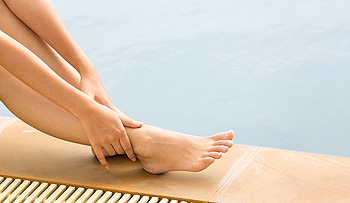 Research has indicated the importance of maintaining everyday foot care. One of the first steps in accomplishing this is by wearing shoes that fit correctly. This may help to prevent uncomfortable foot conditions from developing, including bunions, hammertoes, or ingrown toenails. Additionally, it is beneficial to regularly trim the toenails, and the feet may feel better when they are washed daily. Many patients enjoy using a moisturizer on their feet, which may be helpful in preventing cracked heels. There are several ways to pamper your feet for general well-being, and it is suggested that you consult with a podiatrist who can guide you toward choosing methods that are right for you.
Research has indicated the importance of maintaining everyday foot care. One of the first steps in accomplishing this is by wearing shoes that fit correctly. This may help to prevent uncomfortable foot conditions from developing, including bunions, hammertoes, or ingrown toenails. Additionally, it is beneficial to regularly trim the toenails, and the feet may feel better when they are washed daily. Many patients enjoy using a moisturizer on their feet, which may be helpful in preventing cracked heels. There are several ways to pamper your feet for general well-being, and it is suggested that you consult with a podiatrist who can guide you toward choosing methods that are right for you.
Everyday foot care is very important to prevent infection and other foot ailments. If you need your feet checked, contact Dr. Michael A. Wood from Foot Health Institute. Our doctor can provide the care you need to keep you pain-free and on your feet.
Everyday Foot Care
Often, people take care of their bodies, face and hair more so than they do for their feet. But the feet are a very important aspect of our bodies, and one that we should pay more attention to. Without our feet, we would not be able to perform most daily tasks.
It is best to check your feet regularly to make sure there are no new bruises or cuts that you may not have noticed before. For dry feet, moisturizer can easily be a remedy and can be applied as often as necessary to the affected areas. Wearing shoes that fit well can also help you maintain good foot health, as well as making it easier to walk and do daily activities without the stress or pain of ill-fitting shoes, high heels, or even flip flops. Wearing clean socks with closed shoes is important to ensure that sweat and bacteria do not accumulate within the shoe. Clean socks help to prevent Athlete’s foot, fungi problems, bad odors, and can absorb sweat.
If you have any questions please feel free to contact one of our offices located in Lansing, and Chicago, IL . We offer the newest diagnostic and treatment technologies for all your foot and ankle needs.
Every Day Foot Care
Our feet are important in our everyday lives. The problem is that we tend to neglect them. When this becomes a habit, it can cause significant trouble. Ignoring foot problems can mean pain, limited mobility, and expensive doctor's visits. On the other hand, if feet are cared for and looked after regularly, they will perform without pain or complication.
Routine hygiene is the most basic way to care for the feet. Wash and dry them thoroughly daily. Remember to get between the toes and keep the toenails trimmed and short. If the feet feel dry or there are signs of dryness or cracking, use a moisturizer designed for the feet.
When using moisturizer on the feet, try to avoid applying between the toes. If cream or lotion sits too long, they can cause fungal and bacterial growth. When moisturizer is used between the toes, it can also cause the skin to soften too much.
Shoes are also an important aspect of foot care. When one is picking out shoes, make sure they are the correct size. Shoes need to be snug, but not too tight. On the other hand, if shoes are too loose they can cause foot problems as well. It is highly recommended that shopping for new shoes be done later in the day. The reason for this is that the feet will have settled and swelled to their full size by then. To keep your feet at their most healthy, avoid wearing high heels or flip flops too often. Instead, choose shoes that are good for your feet. Good shoes pad the soles of your feet and support the arches and ankles.
Socks should also be worn daily with closed-toe shoes. They may feel hot during the summer months, but they absorb sweat and moisture off the feet. Without socks, the build-up of sweat in a closed-toe shoe can cause fungal problems and athlete's foot.
The best thing to remember in every day foot care is that shoes do make a difference. If you spend a lot of time on your feet, make sure that your shoes show no signs of wear. Shoes should offer ample support for the arches and the overall foot. Additionally, try to make foot cleaning and maintenance a daily habit. If you keep these things in mind, your feet will stay healthy and safe.
But I Love My High Heels!
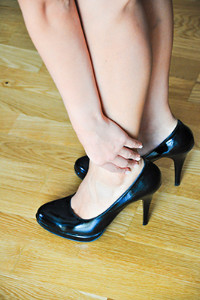 High heels can have the ability to make the feet and legs look slender. This is often pleasing among many people, despite the foot pain that may be felt at the end of the day. It may be beneficial to alternate your favorite high heels with shoes that have a relatively lower heel, and this may be helpful in resting the feet. Additionally, many patients perform toe stretches at the end of the day, and this can alleviate any pain that comes from wearing high heels with limited room for the toes to move freely in. Additionally, research has indicated that having regular foot massages may help to diminish existing tension in the feet. If you would like more information about how high heels can affect your feet, please consult with a podiatrist.
High heels can have the ability to make the feet and legs look slender. This is often pleasing among many people, despite the foot pain that may be felt at the end of the day. It may be beneficial to alternate your favorite high heels with shoes that have a relatively lower heel, and this may be helpful in resting the feet. Additionally, many patients perform toe stretches at the end of the day, and this can alleviate any pain that comes from wearing high heels with limited room for the toes to move freely in. Additionally, research has indicated that having regular foot massages may help to diminish existing tension in the feet. If you would like more information about how high heels can affect your feet, please consult with a podiatrist.
High heels have a history of causing foot and ankle problems. If you have any concerns about your feet or ankles, contact Dr. Michael A. Wood from Foot Health Institute. Our doctor can provide the care you need to keep you pain-free and on your feet.
Effects of High Heels on the Feet
High heels are popular shoes among women because of their many styles and societal appeal. Despite this, high heels can still cause many health problems if worn too frequently.
Which Parts of My Body Will Be Affected by High Heels?
- Ankle Joints
- Achilles Tendon – May shorten and stiffen with prolonged wear
- Balls of the Feet
- Knees – Heels cause the knees to bend constantly, creating stress on them
- Back – They decrease the spine’s ability to absorb shock, which may lead to back pain. The vertebrae of the lower back may compress.
What Kinds of Foot Problems Can Develop from Wearing High Heels?
- Corns
- Calluses
- Hammertoe
- Bunions
- Morton’s Neuroma
- Plantar Fasciitis
How Can I Still Wear High Heels and Maintain Foot Health?
If you want to wear high heeled shoes, make sure that you are not wearing them every day, as this will help prevent long term physical problems. Try wearing thicker heels as opposed to stilettos to distribute weight more evenly across the feet. Always make sure you are wearing the proper shoes for the right occasion, such as sneakers for exercising. If you walk to work, try carrying your heels with you and changing into them once you arrive at work. Adding inserts to your heels can help cushion your feet and absorb shock. Full foot inserts or metatarsal pads are available.
If you have any questions please feel free to contact one of our offices located in Lansing, and Chicago, IL . We offer the newest diagnostic and treatment technologies for all your foot and ankle needs.


